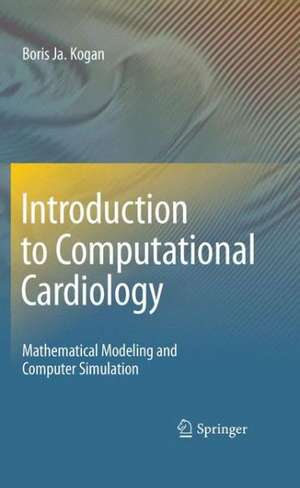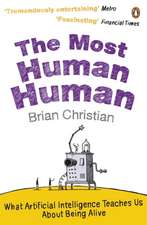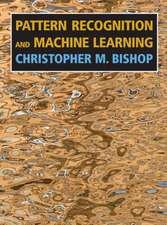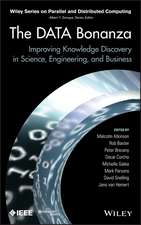Introduction to Computational Cardiology: Mathematical Modeling and Computer Simulation
Autor Boris Ja. Koganen Limba Engleză Paperback – 3 sep 2014
About this textbook:
- Presents descriptions of models used in both biology and medicine for discovering the mechanisms of heart function and dysfunction on several physiological scales across different species.
- Provides several examples throughout the textbook and exercises at the end which facilitate understanding of basic concepts and introduces, for implementation, treated problems to parallel supercomputers.
Introduction to Computational Cardiology serves as a secondary textbook or reference book for advanced-level students in computer science, electrical engineering, biomedical engineering, and cardiac electrophysiology. It is also suitable for researchers employing mathematical modeling and computer simulations of biomedical problems.
| Toate formatele și edițiile | Preț | Express |
|---|---|---|
| Paperback (1) | 638.11 lei 6-8 săpt. | |
| Springer Us – 3 sep 2014 | 638.11 lei 6-8 săpt. | |
| Hardback (1) | 644.18 lei 6-8 săpt. | |
| Springer Us – 21 dec 2009 | 644.18 lei 6-8 săpt. |
Preț: 638.11 lei
Preț vechi: 750.72 lei
-15% Nou
Puncte Express: 957
Preț estimativ în valută:
122.12€ • 132.60$ • 102.58£
122.12€ • 132.60$ • 102.58£
Carte tipărită la comandă
Livrare economică 22 aprilie-06 mai
Preluare comenzi: 021 569.72.76
Specificații
ISBN-13: 9781489985033
ISBN-10: 1489985034
Pagini: 248
Ilustrații: XVI, 231 p.
Dimensiuni: 155 x 235 x 13 mm
Greutate: 0.35 kg
Ediția:2010
Editura: Springer Us
Colecția Springer
Locul publicării:New York, NY, United States
ISBN-10: 1489985034
Pagini: 248
Ilustrații: XVI, 231 p.
Dimensiuni: 155 x 235 x 13 mm
Greutate: 0.35 kg
Ediția:2010
Editura: Springer Us
Colecția Springer
Locul publicării:New York, NY, United States
Public țintă
ResearchCuprins
Mathematical Modeling and Computer Simulation.- Electrophysiological and Electrochemical Background.- Mathematical Models of Action Potential.- Simplified Action Potential Models.- Computer Implementation of Mathematical Models.- Excitation-Propagation in One Dimensional Fibers.- Waves in Two Dimensional Models of Myocardium.- Theory and Simulation of Stationary Wave Propagation.- Excitation Wave Propagation in Narrow Passes.
Textul de pe ultima copertă
Introduction to Computational Cardiology provides a comprehensive, in-depth treatment of the fundamental concepts and research challenges involved in the mathematical modeling and computer simulation of dynamical processes in the heart, under normal and pathological conditions. This book is based on the author's lecture notes from his course 'Introduction to Computational Cardiology' in the Department of Computer Science within the University of California, Los Angeles. It also encompasses the scientific discoveries made by the author, his doctoral students, and his colleagues in the U.S.A. and U.S.S.R. in the last 35 years.
Several features of this textbook are listed below:
- A description of models used in both biology and medicine for discovering the mechanisms of heart function and dysfunction on several physiological scales across different species.
- An introduction to the theory of stationary reentrant wave propagation in one- and two-dimensional tissues.
- Several examples throughout this textbook and exercises at the end which facilitate understanding of basic concepts and introduces, for implementation, treated problems to parallel supercomputers.
Introduction to Computational Cardiology serves as a secondary textbook or reference book for advanced-level students in computer science, electrical engineering, biomedical engineering, and cardiac electrophysiology. It is also suitable for researchers employing mathematical modeling and computer simulations of biomedical problems.
Several features of this textbook are listed below:
- A description of models used in both biology and medicine for discovering the mechanisms of heart function and dysfunction on several physiological scales across different species.
- An introduction to the theory of stationary reentrant wave propagation in one- and two-dimensional tissues.
- Several examples throughout this textbook and exercises at the end which facilitate understanding of basic concepts and introduces, for implementation, treated problems to parallel supercomputers.
Introduction to Computational Cardiology serves as a secondary textbook or reference book for advanced-level students in computer science, electrical engineering, biomedical engineering, and cardiac electrophysiology. It is also suitable for researchers employing mathematical modeling and computer simulations of biomedical problems.
Caracteristici
Includes models used in both biology and medicine to find the mechanisms of function and malfunction of living organisms and its organs on different levels Covers the Theory of Stationary Spiral Wave Propagation Includes supplementary material: sn.pub/extras











